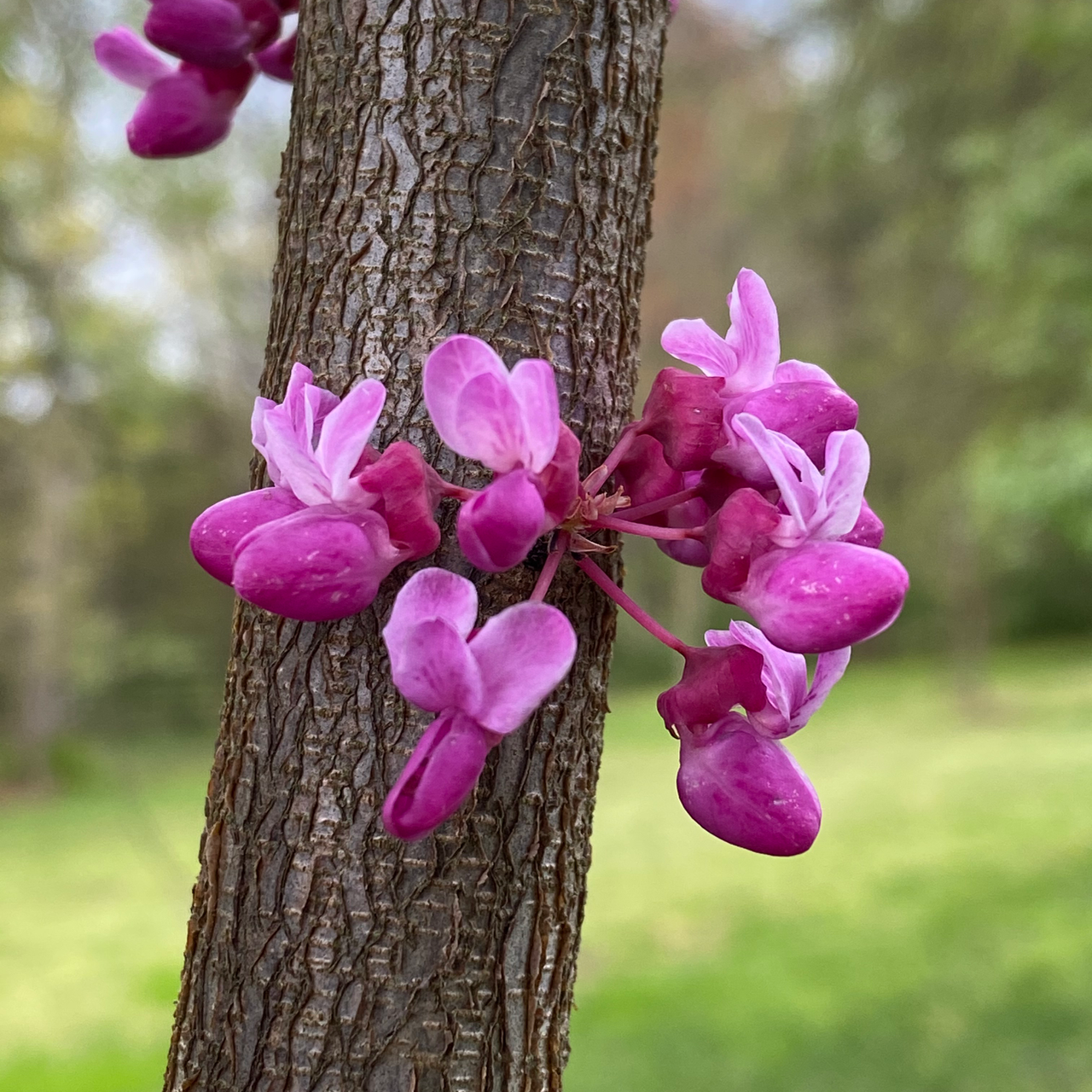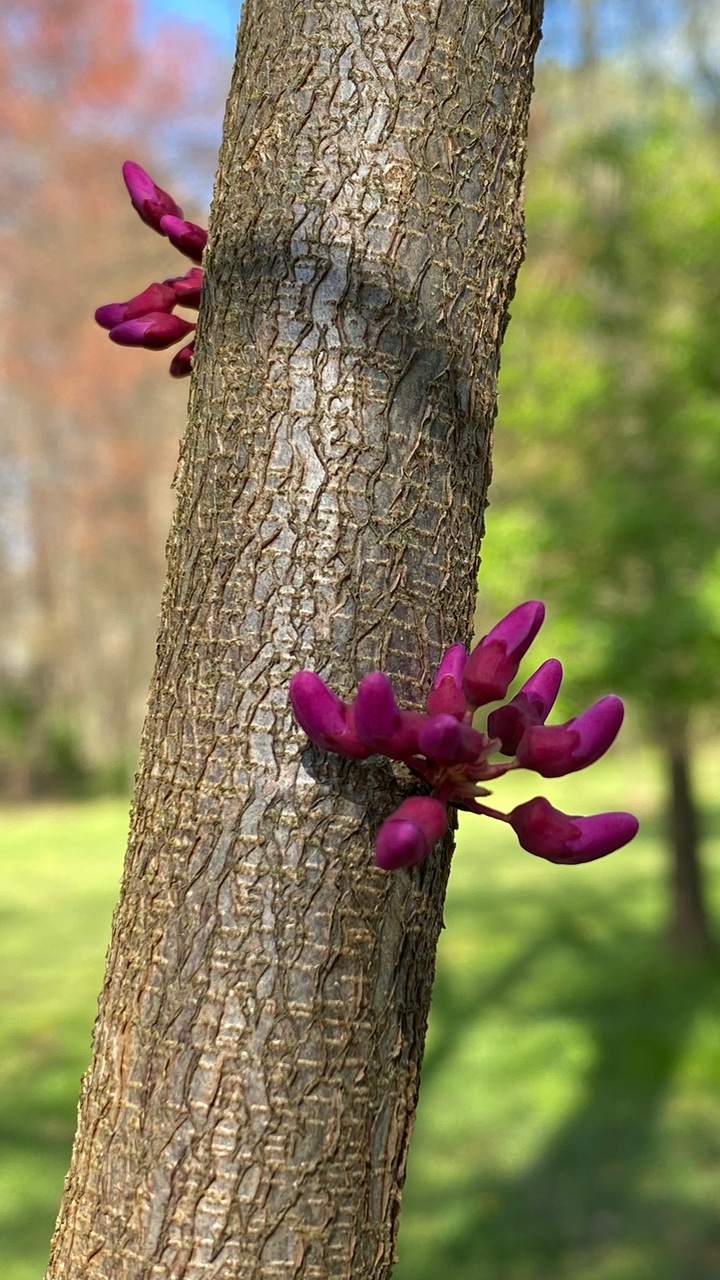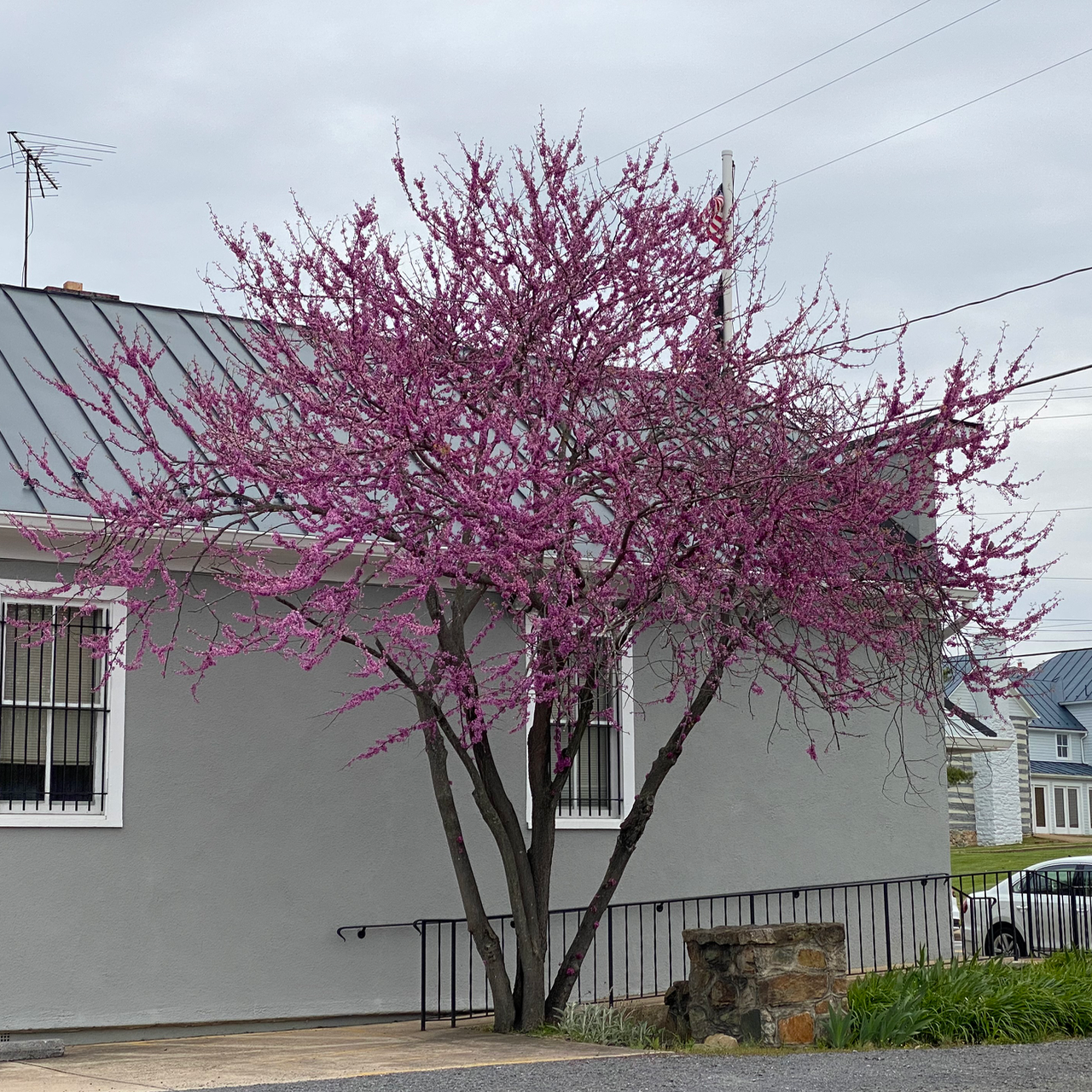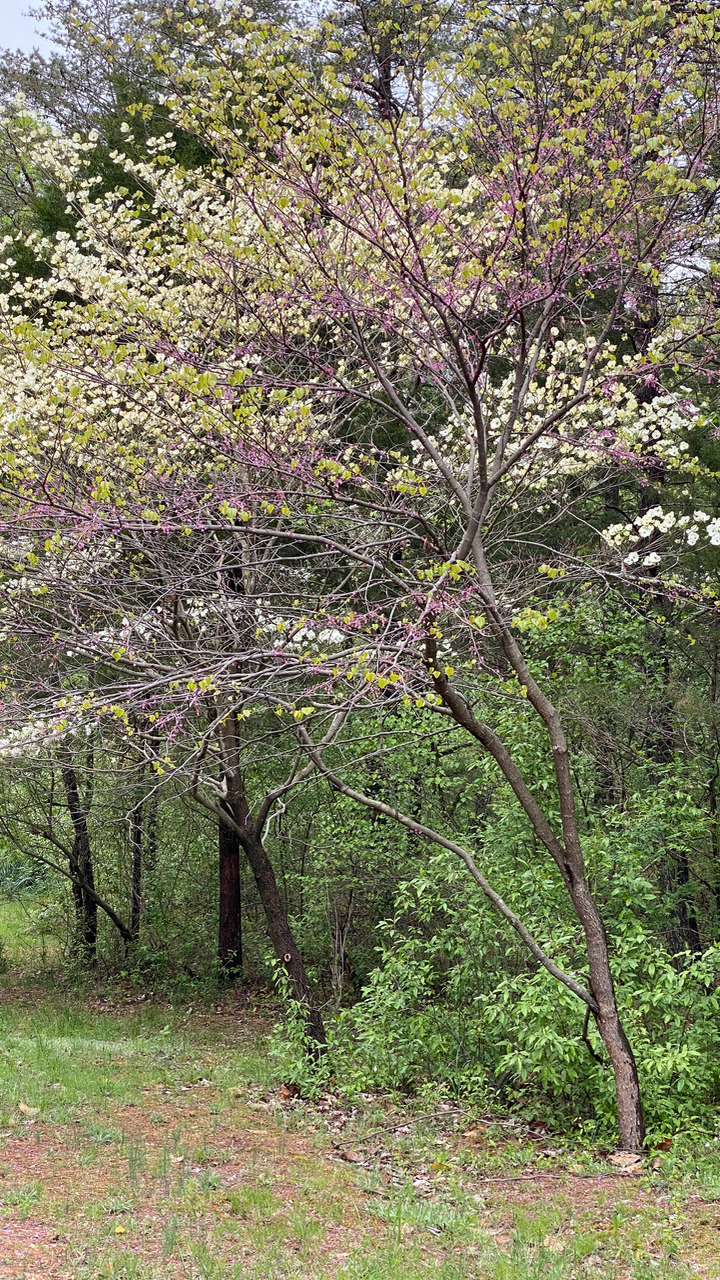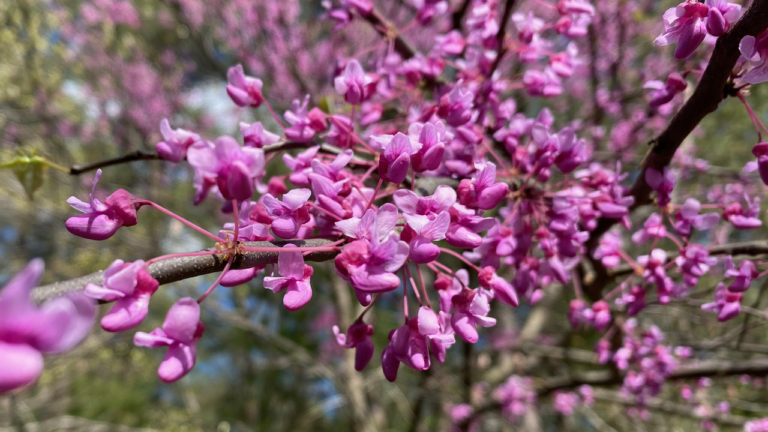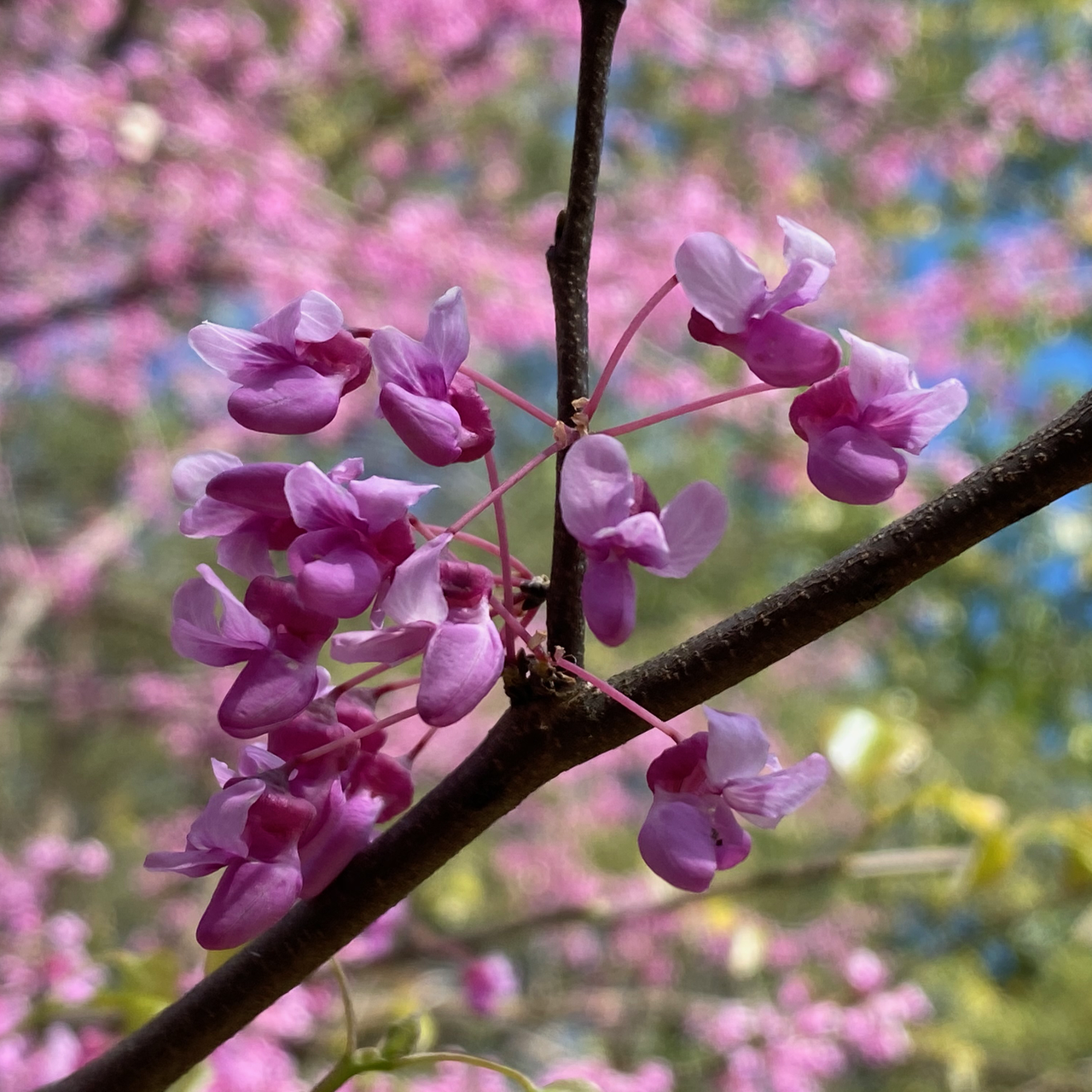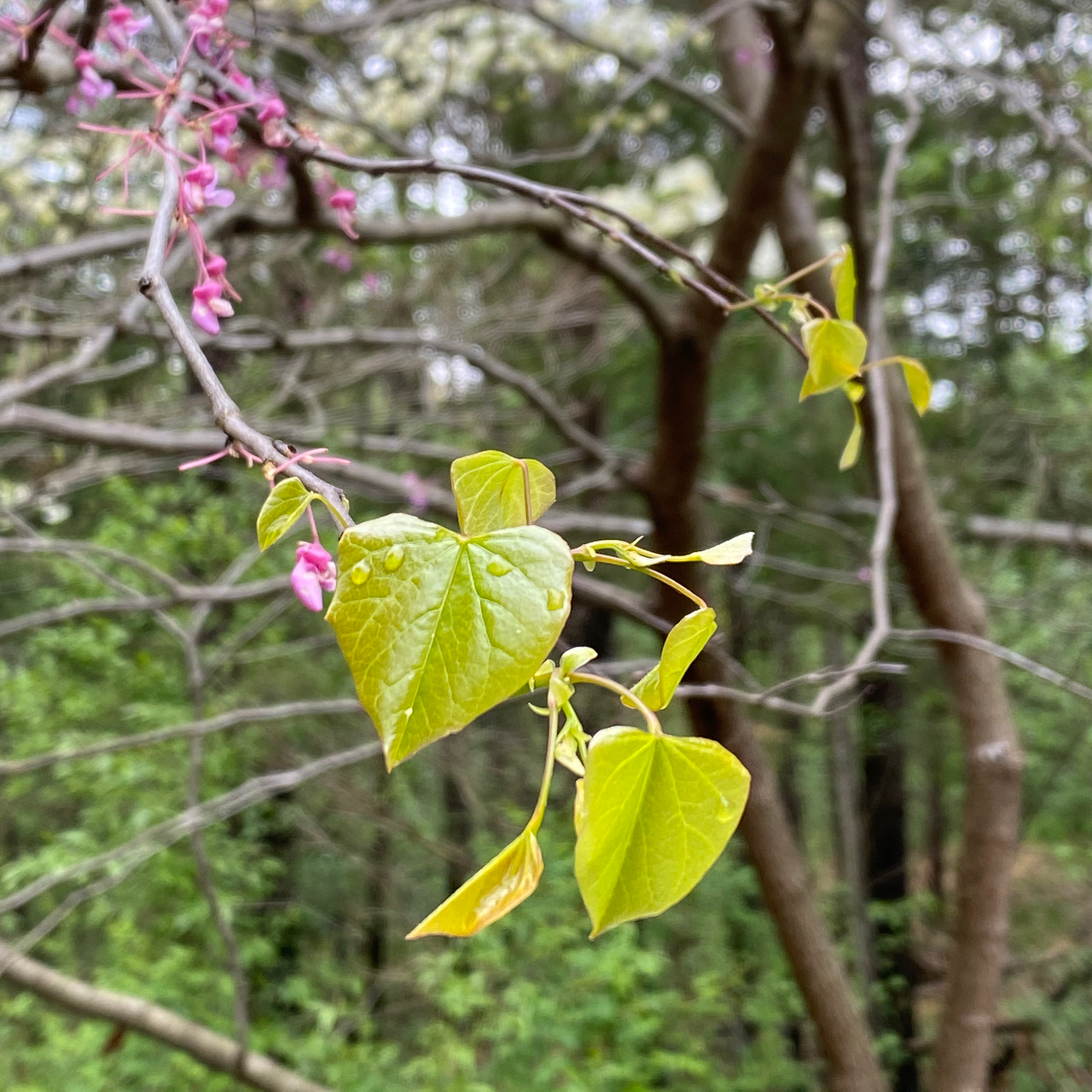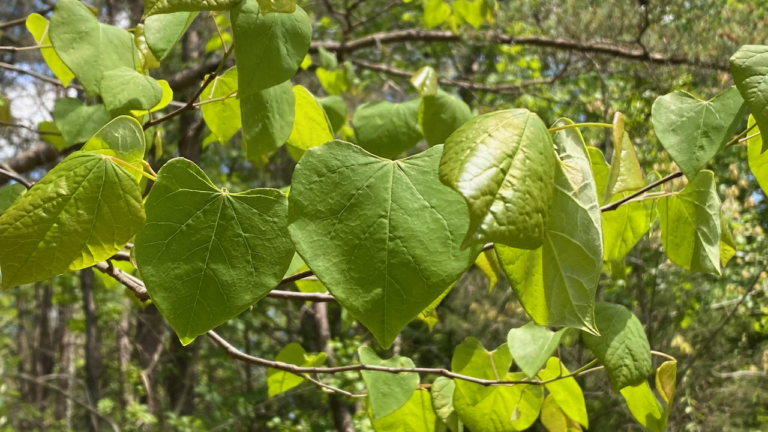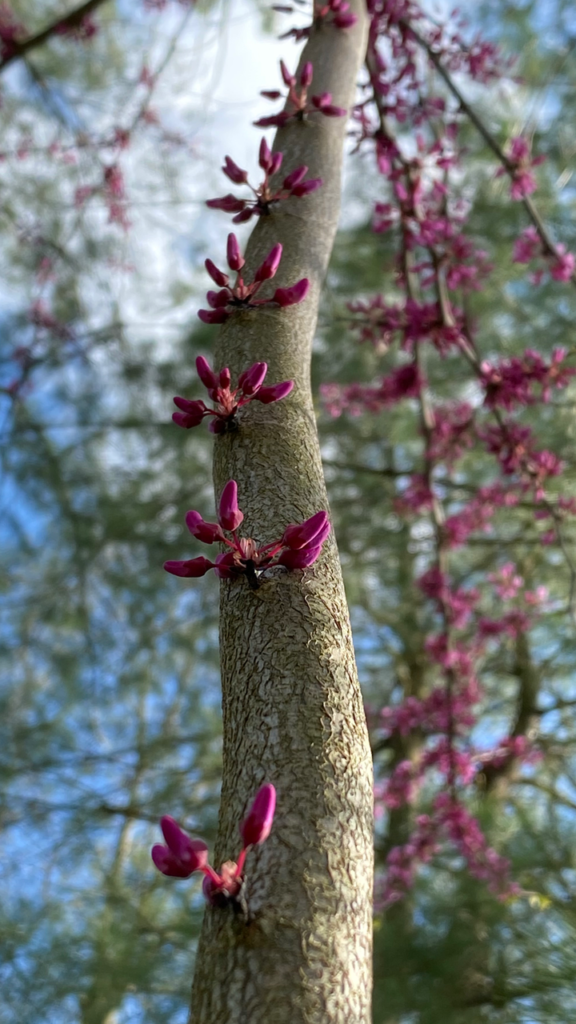The spring of 2020 was precarious for human beings. However, trees seemed to fair well. Many tree species produced prolific amounts of blossoms. The Eastern Redbud was no exception. The bright magenta flowers were spectacular. Learn more about these unique trees.
A Little History - Eastern Redbud
The tree is native to the eastern and south-central United States. Finally, a tree native to the US. If you read my blog, you know that I’ve written about several invasive species recently. Unfortunately, it seems like they are winning. Obviously, I am not a scientist. However, numbers of Autumn Olive and Japanese Honeysuckle dwarf the numbers of Eastern Redbud in Great Falls, Va. It’s such a shame.
Because it is native to the United States, there is a history. Early Indians used it for medicine. Bark was made into teas and infusions to treat fevers, whooping cough, and vomiting. Roots and inner bark were used to treat vomiting and fevers. Not unlike us, they brought the flowers inside. They were thought to drive away winter.
Tre Growth Characteristics - Cercis canadensis L.
The photo on the left is a mature Eastern Redbud. Clearly it grew in an unobstructed spot. The growth pattern is compact and round. The tree on the right grew at the edge of the forest. Its growth pattern is taller and less compact. There are several varieties in the US. Variations across varieties in not unusual either.
Eastern Redbud Magenta Flowers
The Redbud's magenta flowers are the star of this plant. First of all, they provide a beautiful splash of magenta early in the spring. The gift is to take the time to look at them up-close. They are delicate orchid like clusters of tiny flowers. Each one is a combination of pink and magenta. The stems are short, and they grow close to the branch. For that reason, they provide a unique visual. Branches appear to be covered in color, but they are still discernable. They are quite amazing.
Landscape Uses
This tree thrives in a variety of light and soil conditions. Of course, it doesn’t survive everywhere. Chose the location carefully. The unique flowers and leaves provide variety that can’t be matched. The growth pattern lends itself to natural landscape settings. Seems to rare to see an intentional planting. It is such a shame. What a lovely, little used native plant.
References:
First, USDA NRCS Plant Guides always provide good basic information. Find out more in this fact sheet accessed 5/18/20.
Second, The Morton Arboretum is another great resource. Although based in the Chicago area, the information is accurate. Check out this page accessed 05/17/2020.
Finally, The Arbor Day Foundation also has excellent planting information. Click here to find out more accessed 05/20/20
